I. SCIENCE AND PHILOSOPHY
Every science begins as philosophy and ends as art; it arises in hypothesis and flows into achievements.
Science describes, philosophy interprets.
Science without philosophy, facts without valuation, is mutilated.
Science becomes dogmatic and dictating, philosophy is always flexible.
Comments: The above four sentences fit in well with the very structure of homoeopathy. Homoeopathy as a scientific discipline fulfills all criteria of scientific experimentation. It has the substratum of philosophy. Science and philosophy run parallel in homoeopathy; philosophy doesn’t allow the science to be dogmatic, given the central tenet of individualization.
Failure in homoeopathy has much to do with the wrong notions about science and philosophy. Basic clarity at the trinity of science, philosophy and art helps to fathom homoeopathy and reduce the failures in clinical practice.
Comments: To understand wisdom, we need first to develop love towards wisdom i.e. philosophy. Wisdom illuminates the field of experience. Wisdom imparts knowledge and skills, necessary for application. Wisdom de-confuses and brings forth clarity at every level. Wisdom enhances the creativity necessary for right action at the right time. To be wise and to remain wise is a process, a continuum. It is a mandatory process and not a liability.
Wise people understand dimensions of time and space in totality and release their actions in an appropriate way. A homoeopathic physician can’t afford ‘not to be wise’.
PHILOSOPHY IN MEDICINE
– Concepts of health, disease and cure
– Reductionism versus Holism
– Realism versus Antirealism
– Causation
– Epistemology- analysis of knowledge
– Rationalism versus Empiricism
– Medical Thinking-“How a doctor thinks”?
– Ethics
– What is Medicine?
Comments: Every physician must know how he thinks. Who is he? Is he a pharmacist or a healer? Whether he accepts “physician heal thyself”.
There is philosophy in medicine. As a student of holistic homoeopathic therapy, he must know what he is treating.
Failure to appraise the philosophy in medicine results in chaos.
PHILOSOPHY, THEORY AND PRACTICE
– Application of Principles into Practice
– Skills for application
– “Homoeopathic practice is nothing but applied homoeopathic philosophy”
– Amalgamation of concepts for the benefit of the patient
Comments: Philosophy and theory are perpetually linked; philosophy influences how one sees the world, theory shapes how one intentionally interacts with the world. Philosophy impacts the definition of important problems and theories provide strategies to arrive at solutions to those problems.
The philosophical is the easiest approach, the theoretical is more difficult and more useful and the practical is the most difficult and the most useful of all. Philosophy relates to possibilities. Theory relates to laws and practice is all about facts. In other words, philosophical is thinking, theoretical is talking and practical is doing.
Responsible practice stems from the unity of philosophy and theory. One of the causes of failure in practice is related to not fathoming the scales of philosophy, theory and practice. Skills in practice get developed only through training.
II. DEFECTIVE DISEASES (§172-230)
– One sided diseases
– Incurable pathologies
- Define reversible, borderline and Irreversible.
- What is potentially curable in nature is curable with homoeopathy.
- The healing is limited to capacity of vital force itself.
- Disease never exists by itself, what exists is an individual diseased person.
– Diseases due to mechanical causes
– Acute or chronic poisoning
– Deficiency diseases
– Severe emergency cases
– Artificial chronic disease (Drug miasm)
– Defective selection of a case for treatment. Treating cases out of the scope of homoeopathic therapy
– The law of similars is applicable in all cases where the causes of sickness are due to an inadequacy of the vital force.
– Are we dealing with failures of the law of similars or with wrong expectation of the capacity of the vital force?
Comments: There are many different diseases in the world and some are harder for doctors than others. There are over-diagnosed and under-diagnosed conditions and there are conditions of delayed diagnoses. Also getting a rare disease diagnosis can be a long, frustrating experience.
A homoeopathic physician gets the advantage that his treatment modality is not only dependent on the label of the disease. Yet, no one should underestimate the value of diagnosing the disease.
Defining the situation and releasing right action in the interest of the patient will bring on the successful result. One must know the limitations that exist at three levels – disease, patient and physician.
III. DEFECTIVE PATIENT
– Patient’s non- compliance: Define thoroughly
– Lack of self awareness
– Semantic difficulty
– Cultural impacts
– Despair or no will to heal
– Not following diet and regimen
– Too highly educated or too illiterate
– Dogmas, pseudo-intellectualism, fantasies, theorizing
– Secretive patients
– Consuming drugs, medicaments, addicts etc.
– Lack of exercise, of hygiene etc.
Comments: The “difficult patient” can be defined as one who impedes the clinician’s ability to establish a therapeutic relationship.
Nearly one out of six outpatients are difficult in clinical practice. However, considering the patient as the only cause of the problem is not true. The relationship and communication between clinician-patient are key factors in understanding and caring for patients who are perceived to be difficult. The physicians prefer patients of trusting, cooperative, non-complaining and non-demanding type.
One can help difficult patients by letting them actively participate in the healing process. The help from relatives can be of considerable benefit.
Remember, incurable diseases are the best business today!
IV. DEFECTIVE MEDICINE
– Low quality back potencies (original substances)
– Improperly prepared potencies
– Large doses of medicines(drop doses)
– Improper use of potencies in physiological doses (3x, 6x, 12x)
– Wrongly encoded labels
– Use of adulterated alcohol(non-extra neutral alcohol)
– Use of substitutes
Interference with the remedies
- Keep the remedy out of the sunlight and away from strong odors.
- Perfumes, chemical fumes, hair spray, pain balms, aromatic toothpaste, menthol, essential oils and burning agents such as incense
- Magnetic or electrical fields (X-ray, Magnets)
- Camphor & camphor products, lip balms, cough lozenges, deep heat liniment, mint products, caffeine etc.
- Any aromatic fumes (paint, ammonia, hair permanents, nail polish and remover, moth balls, etc.)
Comments: A homoeopathic physician has done his job of data elicitation, documentation and processing but if he is not getting the ‘quality’ medicines from a homoeopathic pharmacy, all his efforts will go in vain.
V. DEFECTIVE PHYSICIAN
– Defective personality of a physician
– Physical and/or mental illness
– Inadequate training and consequent incompetence
– Improper diagnosis in non-surgical and surgical cases
– Inability to manage a case
– Non-removal of exciting & maintaining causes
– Non-use of auxiliary treatment
– Lack of dietetic guidance
– Lack of psycho-therapeutic counseling
Comments: A doctor is first a human being, then a physician and then a homoeopathic physician. The patient may also be dissatisfied with clinical encounters because of unmet needs, unfulfilled expectations and unresolved medical issues. Difficult encounters may be attributable to factors associated with the physician, patient, situation or a combination. Common physician factors include negative bias toward specific health conditions, poor communication skills and situational stressors.
A successful patient-physician relationship is one of flexibility, continuity and mutual respect. The physician should try to follow these qualities to avoid failures.
Know yourself to know others.
The chief cause of failure is the physician himself.
VI. DEFECTIVE CASE TAKING
- Full dedication of consultation time and undivided attention to the patient.
- Don’t avoid detailed case taking. It isthe first step to cure and not a formality. Remember, ‘no pains, no gains’.
- Fact is the ultimate truth. Be after factual, hard data.
- Avoid “Noise” factors like badly encoded messages, distractions, different perceptions of reality, attitudinal clashes, semantic difficulties, concept of self, etc.
- Knowledge of communication skills and interview techniques
- Observation: two types- Non-observation and Mal-observation.
Mal-observation – fallacy arising out of the wrong interpretation of sense- perception. Non-observation – a negative fallacy, because in it we do not observe something; mal-observation is a positive fallacy, because, in it we observe things wrongly.
- Knowledge of body language and its integration with MM, repertory and personality study
- A physician should not tell his own problems to a patient.
- Don’t let the patient get involved in physician’s problems and vice versa.
- Everybody has his own weak points, but a physician should not to show them to the patient.
- Create an atmosphere so that the patient will spontaneously talk about his complaints.
- See that your patient likes you and that you would like to help your patients.
- Don’t avoid physical examination, do investigations when necessary.
- Don’t be rude and irritated while communicating with the patient even if he is not co-operating.
- Remember, sound personality of a physician goes for effective communication.
Adherence
- Adherence is dependent 70% on a physician.
- Remember, ‘poor adherence attributed to the patient’s characteristics’ is a myth.
- In fact, no consistent relationship is seen between adherence and Age, Gender, Social/ Economic status, Marital status and Personality traits.
- Be a good listener. Nothing facilitates human transaction better than listening does.
- Listening = ‘Life blood’ of relationships.
Comments: Success and adequate and accurate history always go together. Compromise at case taking results in failure.
VII. DEFECTIVE CASE DOCUMENTATION
- Non-recording of data
- Inadequate recording of data
- Follow up in haste with no adequate notes
- Data processing notes not attached
- Use of a case record system: merits & demerits
- Messy filing system
- Mistakes in prescribing
Comments: A well-documented data in the first consultation and then in the follow up pays off! It is better to write the life space of the patient in the patient’s language; this helps in follow up visits. Use of a case record form disciplines the physician and he is after totality. It saves the time too.
VIII. DEFECTIVE TOOLS
- HOMEOPATHIC MATERIA MEDICA
Proving on healthy human beings
- Defective Proving
- Improper proving records
- Partial proving of drugs
- Discrepancy between original and modern proving
- Proving only related to dreams & delusions
- Animal proving not adequately done
The Study of MM
- Brushing aside the original text books& reading only commentaries
- Emphasis only on “keynote” symptoms
- Emphasis only on “living” MM: “The Stories”
- Emphasis only on “disease” symptoms
- Using unreliable MM: (§ 144)
- Unresolved problems of MM viz. Language, Details, Confusion, Boredom, Scattered data, Fixed ideas, Clinico-pathological co-relation, Action of a remedy, Remedy relations etc.
- Heavy reliance on “Doctrine of Signatures”
- “From such a material medica, everything that is conjectural all that is mere assertion or imaginary should be strictly excluded; everything should be the pure language of nature, carefully & honestly interrogated.”-Hahnemann, § 144, Organon of Medicine.
HOMEOPATHIC REPERTORY
Misuse, overuse or nonuse of repertory
- Bad habit of prescribing a drug just by thumbing through a favorite repertory
- Temptation to prescribe the remedy that appears in bold letters of symptoms
- Using repertory when not necessary
- Doing mechanical/quantitative repertorization
Knowledge of Repertories
- Three basic repertories: Boenninghausen, Kent, Boger
- Each one with their distinct philosophy and approach
- Synthesis, Murphy, Complete repertory, Patel, Tarkas-AKK (unpublished), Regional repertories
- Synthesis more qualitative, Complete with more rubrics & remedies, Murphy: Constitution, Children, Diseases, Emergency, Environment – better chapters
- Let the case decide which repertory to be used
Characters of Repertory
- Kent: Emphasis on physical and mental generals. When physical particulars and concomitants are more prevalent, Kent not useful.
- Boenninghausen: Emphasis on particulars and concomitants. When physical generals and mental generals are more prevalent, Boenninghausen is inadequate.
- Boger: Emphasis on pathological generals
- The alphabetical repertories of Phatak and Murphy have no philosophy; hence rubric selection must be appropriate.
- Structure of Synthesishas same format like Kent but it contains many more rubrics and remedies.
- Complete Repertory is a huge collection and the material ranges from doubtful to reliable. Again it is alphabetical and has no any philosophical approach.
The study of rubrics
- Knowledge of rubric conversion; going beyond symptoms
- The rubric selected must carry the exact meaning that the patient has
- Rubric meaning in literary and medical terms
- Avoid taking many rubrics that carry the same meaning
- A remedy may be in ‘Cross References’
- Clinical symptoms vs Proving symptoms: 75% of remedies occur in lower degree i.e. 1 mark; come from proving only; should we push them?
- Overemphasis on ‘clinical’ rubrics
- Not repertorizing the acutes during follow up
IX. MEDICAL ERRORS
- Errors will happen since no human is infallible.
- Errors are not synonymous with negligence.
- Make a clear distinction between blameless and blameworthy errors.
- Errors must be prevented to the fullest extent possible.
- Constant preoccupation with the possibility of failure should always be kept in mind.
X. MISTAKES IN PRESCRIBING
- Over emphasis of symptoms to be avoided. Study them through 1. Context 2. Intensity 3. Patterns.
- Consider Time versus Intensity factor.
- Prescribe upon a disease state and not only the symptoms e.g. A person has heartburn due to anger and he also has gas and distension of abdomen. It means all digestive symptoms are due to anger. Anger as the state that has to be cured.
- Peculiar symptoms are not important every time: They can lead to a rare remedy but may not cover the essence. A peculiar symptom can be a major symptom or totally irrelevant.
- Go from a patient to a remedy: A physician should not match what a patient doesn’t possess. Try to find a remedy that best fits a case. It is not expected that the patient should cover the innumerable symptoms of the remedy.
- Overemphasis on etiology: For a homoeopath the sick individual himself is the cause and the effect. Remedy can be outside the rubric of ‘Ailments from’. A.F. can be only the exciting or precipitating cause. Looking for etiology in every case may not yield success.
- Ignoring evolutionary totality: Disease evolves, the person devolves. There are always layers, phases, stages and transitions. Study them through material medica.
- Define what sickness is in a patient: Ignoring this and prescribing only on symptoms brings on the failures.
- A priory or predetermined notions: e.g. a) Mentals are more important always than physicals b) Certain potencies are to be used for certain diseases.
- Ignoring the miasmatic state: Similarity to be achieved not only at the level of symptoms but at the level of miasmatic state too.
- Mistakes in interpreting the data in a remedy: There is no fixed way a remedy reacts. Don’t stereotype the remedies. Don’t harbor preconceived ideas of what a particular remedy is good for. Try to fit the patient into the idea of the remedy. Each remedy is much wider than one person’s collection of symptoms. Remember that every remedy has its own levels or stages of health and disease.
- A remedy is neither good nor bad for any particular disease condition; if it is homoeopathic to the case, it will prove effective.
- Fixities about material medica: e.g. don’t give Pulsatilla and Sepia to men. Don’t give Chamomilla to adults. Don’t give Baryta carb to an intelligent man.
- Overemphasis of healthy symptoms: Differentiate always between healthy and diseased individuals. Don’t prescribe remedy on healthy symptoms. e.g. A person is idealistic, responsible, romantic, etc. Don’t mix up healthy symptoms with disease symptoms. In acute cases give importance to the upper layer of the crucial symptoms, including the clinical ones. The affinity of the organ affected the character of the lesion and individualizing features are more important in acute.
XI. DON’T
- Don’t use polypharmacy.
- Don’t make false promises; neither assure great results to a patient when the case falls out of the limitations of homoeopathy and your own limitations.
- Don’t be overzealous to continue treating a case too long when it is evident that the patient is not showing any sign of improvement and his condition is deteriorating in spite of your best efforts.
- Don’t hesitate to refer to books in the presence of a patient, when you find it necessary. Referring to a book neither lowers your dignity, nor puts a question mark on your knowledge. It rather helps to show your sincerity.
- Don’t change the remedy unless the symptom complex of the ‘to be given remedy’ is clear & you are sure of your choice.
XII. WHERE DO YOU STAND?
- The philosophy, repertory and materia medica are all there to guide us, not to tell us what to do.
- The only person who tells us what to do is the person being treated as a patient.
- Poor knowledge of basic sciences like Anatomy, physiology, pathology, ethology, psychology and other biological sciences. It is a great delusion to pretend to practice homoeopathy without a sound knowledge of the basic and diagnostic sciences.
- “If our school ever gives up the strict inductive method of Hahnemann, we are lost and deserve only to be mentioned as a caricature in the history of medicine.”- C. Hering.
XIII. POSOLOGY
- Don’t select a particular potency on personal preferences and the so called personal ‘experiences’. Let the rules ‘tailored’ to the individual decide.
- Don’t be averse to a particular range of potencies; all are equally effective and prove useful when selected logically.
- Repeat if necessary, don’t repeat when not necessary. Frequent repetition is not always dangerous; contrary to the popular belief, sometimes it is the necessity of the patient.
XIV. FOLLOW UP
If a patient returns without any result
- Re-analyze the case as if you have never seen the patient before.
- Re-case taking without prejudice
- Send the patient to a colleague and discuss the paper case together.
- Remedy may be from a rare group of remedies
XV. KEY TO SUCCESS
- Constant and strict individualization (§ 82& 83)
- Complete objectivity: at patient, proving and selection of a remedy level § 3
- Truth is the daughter of time, not of authority – Becon
- Hahnemann – “It is now high time that all who call themselves physicians should at length cease to deceive suffering mankind with more talk, and begin now, instead, for once to act, that is, really to help and to cure.”
XVI. RESOLUTIONS
- Well trained practitioners of classical homeopathy
- Skilled and experienced teachers of homeopathy
- Qualitative homeopathic training program
- Accessible, affordable, high quality clinical supervision
- The ability for trained homeopaths to practice legally
- Widespread public education and media coverage
- Standardization of training, practice and ethics
- Financial prosperity for everyone involved
- Co-operation among homeopathic physicians
CONCLUSION
The causes of failure in homoeopathic clinical practice are legion and a physician must address them in a serious way. The problems encountered in clinical practice and the resolutions that can be applied are discussed in this article. It is expected that the profession will ponder over the issues raised in this presentation and will try to follow the instructions.
REFERENCES
- Organon of Medicine, Samuel Hahnemann, B. Jain Publishers, New Delhi
- Teachings Psychiatric Patients Pure Classical Homeopathy, Andre Saine, B. Jain Publishers, New Delhi
- Crossroads to Cure, Nicola Henriques, Totality Press, CA
- Lectures on Homoeopathic Philosophy, J.T. Kent, B. Jain Publishers, New Delhi
- Commentary on Organon of Medicine, Robin Murphy, B. Jain Publishers, New Delhi
- What causes treatment failure – the patient, primary care, secondary care or inadequate interaction in the health services? Per G Farup, Ivar Blix, SigurdFørre, GjermundJohnsen, Ove Lange, Rune Johannessen and Hermod Petersen www.biomecentral.com

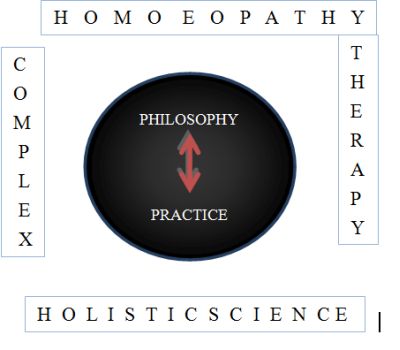
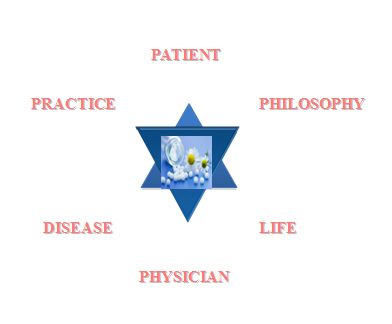
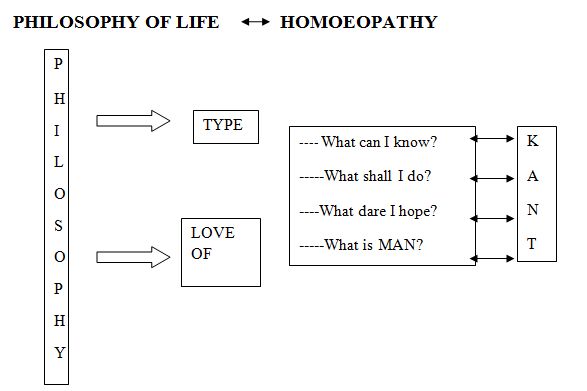

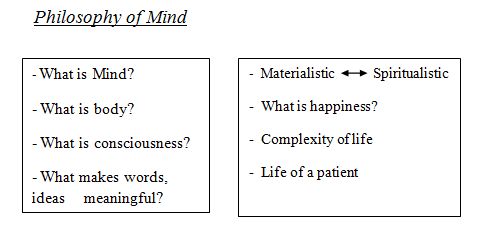

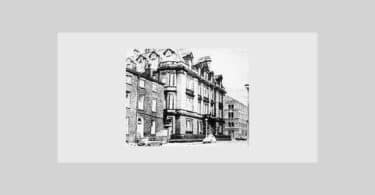

Thank you for giving us lots of food for thought! 🙂
Very informative to understand a patient , how to take case, listening as soft skill, and this skill is most important skill among all skills. If listened properly, understood disease in Man and Man in disease, doses, repetition, follow up , reference to be taken from books MM, repertories. etc.
Very nice topics to read again and again..
regards,
S.N.Ojha